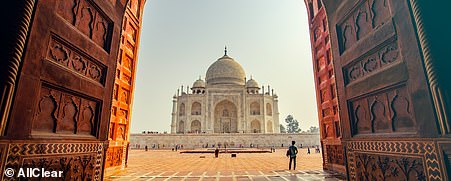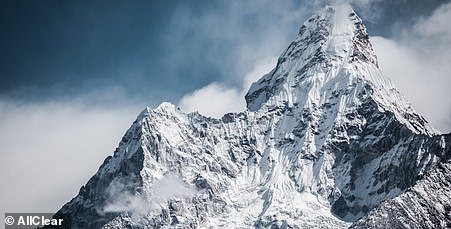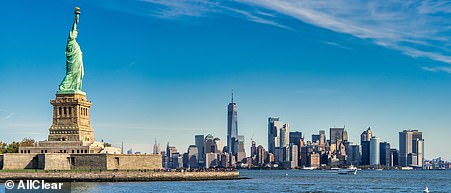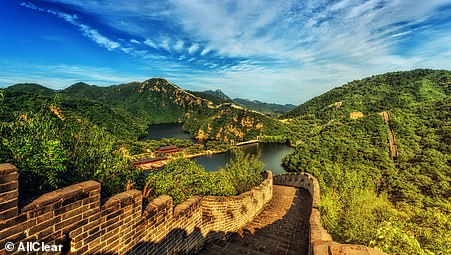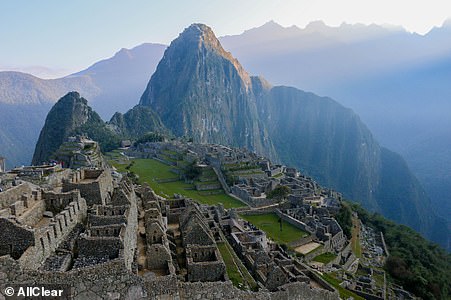What the world wants to VISIT: Fascinating map shows the most popular landmarks in (almost) every country, from Stonehenge to the Statue of Liberty
A fascinating, reworked world map reveals the most popular tourist attractions in almost every country in the world.
The map – generated from five years of Wikipedia page view data – features country names supplemented with the national landmark most read about on Wikipedia, in an effort to discover the world’s most ‘admired’ sights and attractions.
In Britain, the archaeological site of Stonehenge in Wiltshire is the most popular attraction, with 13.5 million page views on Wikipedia.
Meanwhile, in the US, the Statue of Liberty is number one, with Wikipedia page views for the monument reaching 19.8 million.
And Down Under, the Great Barrier Reef is Australia’s most popular tourist attraction, with five million page views in the free online encyclopedia.
A fascinating, reworked world map reveals the most popular tourist attractions in almost every country in the world
The world’s most popular attractions include 32 cultural and historical sites, 32 parks and reserves, 26 ancient ruins, 20 mountains and volcanoes, 17 bodies of water, 15 religious monuments, nine islands, seven modern architectural sites and two deserts. .
The results of the study, conducted by a travel insurer Everything clearwere also used to create a series of regional maps, showing the most popular sights on each continent.
In Europe, the Eiffel Tower tops France (17 million page views), the Sagrada Familia ranks number one in Spain (11 million page views), the Cliffs of Moher sounds the gong in Ireland (1.9 million page views), the Colosseum ranks number one. one in Italy (12 million page views) and the Acropolis takes the top prize in Greece (4.8 million page views).
Some of the more unusual European sights include the Manneken Pis in Belgium, a famous statue of a little boy urinating (two million page views), and the Wieliczka Salt Mine in Poland (1.2 million page views), a 300-meter-high – ( 327m) deep former mine with a chapel in the underground depths.
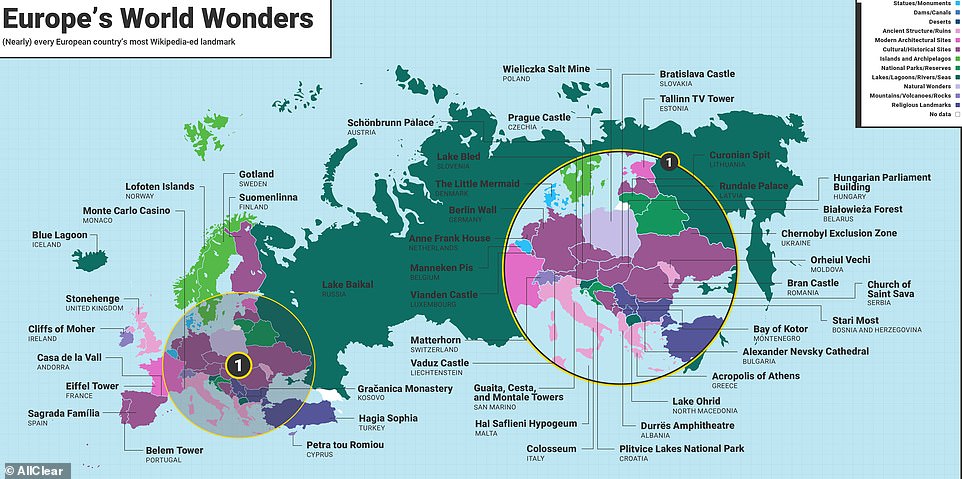
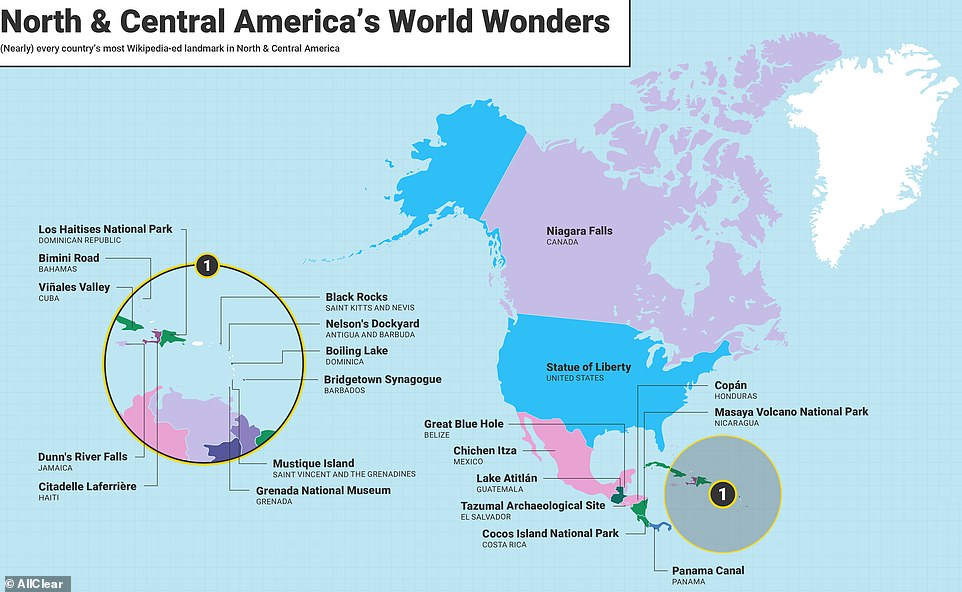
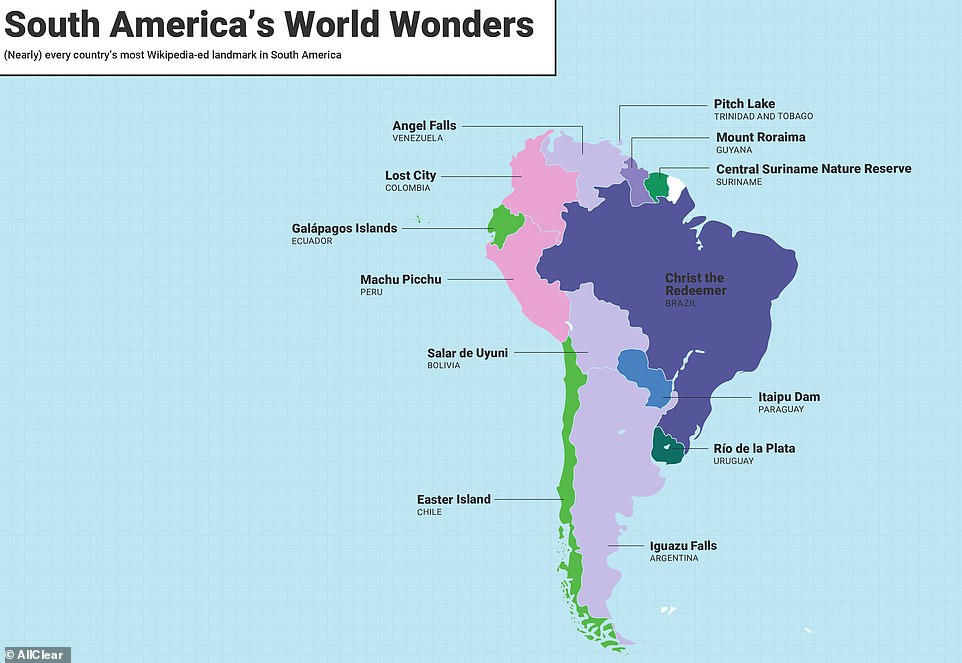
Country names have been supplemented with the national monument most read about on Wikipedia, in an effort to discover the world’s most ‘admired’ monuments and attractions
In North and Central America, Niagara Falls is number one in Canada (8.7 million page views) and the Mayan pyramid Chichen Itza is number one in Mexico (6.9 million page views).
Several national parks are also leading – Los Haitises National Park in the Dominican Republic (98,000 page views); Cocos Island National Park in Costa Rica (833,000 page views); and Masaya Volcano National Park in Nicaragua (212,000 page views).
Moving to South America, it is the Christ the Redeemer Monument that takes the top spot in Brazil with 6.8 million page views, Machu Picchu (14 million page views) is the top in Brazil and the Lost City, or ‘Ciudad Perdida’ – the site of an ancient settlement – is number one in Colombia (720,000 page views).
Waterfalls are among the most popular places on the continent – in Venezuela it is Angel Falls, known as the world’s highest uninterrupted waterfall at 979 meters (3,211 ft), with 2.3 million page views, while in Argentina this is the Iguazu Falls are (2.9 million pages). views).
Milford Sound travels around the world to Oceania and at the top of the podium in New Zealand is Milford Sound (649,000 page views); in Fiji it is the Mamanuca Islands (448,000 page views) and in Micronesia it is the archaeological site of Nan Madol (1.3 million page views).
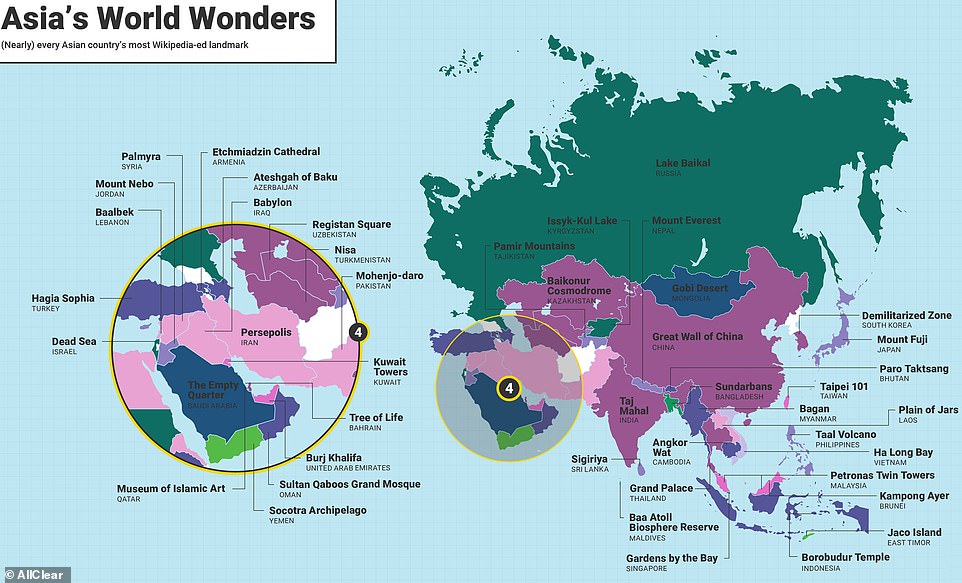
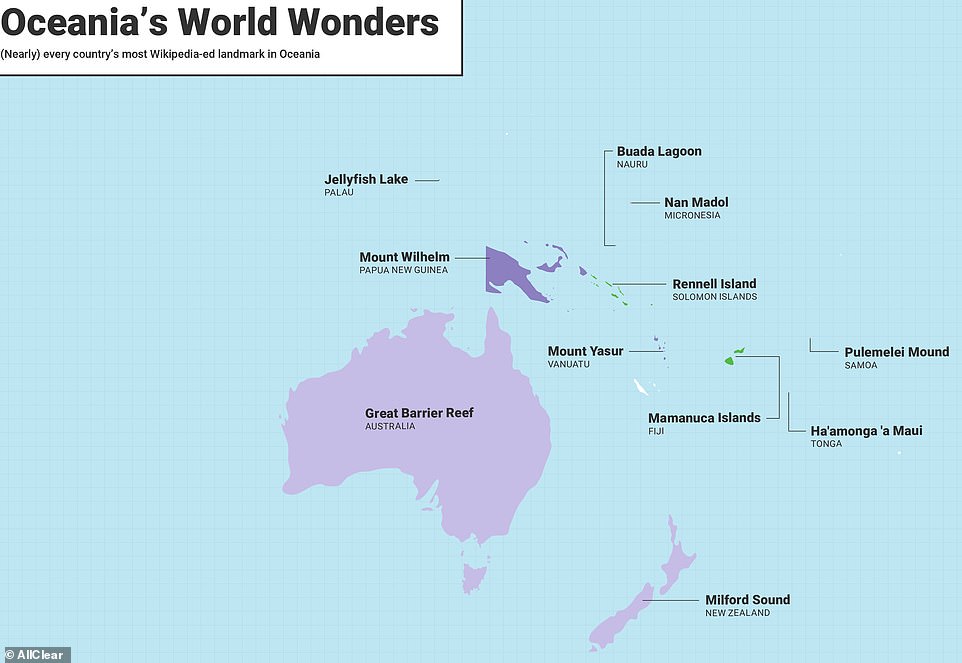
The world’s most popular sights include 26 ancient ruins, 20 mountains and volcanoes, and 17 bodies of water
One of the more unusual sights to make the list is Jellyfish Lake (375,000 page views), a lake full of non-stinging jellyfish on the island of Palau.
In Asia, in India, the Taj Mahal reigns triumphant (28 million page views); in Nepal it is Mount Everest (22 million page views); in Cambodia it is Angkor Wat (nine million page views); and in China it is the Great Wall of China (17 million page views).
Among the more unusual attractions at the top of the podium are Kampong Ayer in Brunei, a fascinating village built on stilts over the water (129,000 page views) and the ‘Demilitarized Zone’ (four million page views), the buffer zone between North and South. Korea.
In the Middle East, the Burj Khalifa skyscraper – the tallest building in the world – is number one in Dubai with 23 million page views, while the Socotra Archipelago, known for its alien ‘dragon blood trees’, is top in Yemen (2.8 million page views).

Carrying out the research to draw up the maps resulted in a list of more than 4,300 landmarks from all countries of the world.
Finally, in Africa, it is the Kruger National Park, one of the largest game reserves in Africa, which is number one in South Africa (1.6 million page views), Victoria Falls the top in Zimbabwe (3.4 million page views) and the Kilimanjaro is number one in Africa. Tanzania (7.5 million page views).
Several ancient cities on the continent also rank at the top – for example in Libya it is Leptis Magna, which dates back to 1000 BC (731,000 page views) and in Tunisia it is Carthage, from the 9th century BC (5.5 million page views) .
When conducting the research, a list of more than 4,300 landmarks from all countries of the world was drawn up.
For each landmark with Wikipedia pages, page views were analyzed over a five-year period. Culturally or historically sensitive locations or disputed areas have been removed from the data for sensitivity reasons, as have countries with underdata.
Commenting on the research, AllClear said: ‘Because Wikipedia is often where people turn to learn and gather information, it’s the perfect data source to help determine which places in the world people are most interested in.’
To see the full study, visit allcleartravel.co.uk.

